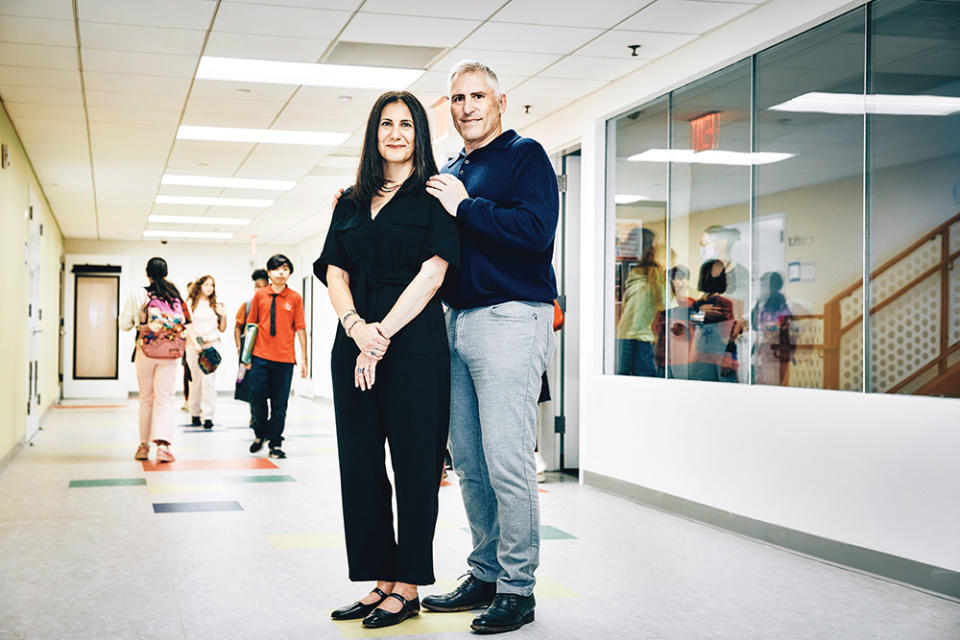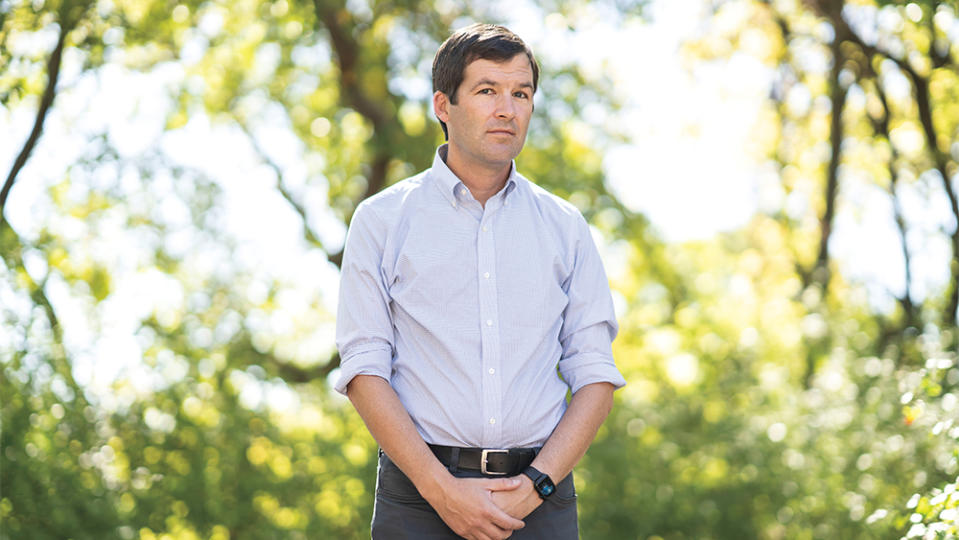Everything You Need to Know to Start a Successful Nonprofit—From Founders Who Did It

Jack Griffin, now 25, was a high-school sophomore in Atlanta when he saw a 60 Minutes broadcast on hunger in America. Dismayed, he resolved to be part of the solution, one bag of groceries at a time, by volunteering at a local food pantry. There was just one catch—he couldn’t find one. Then a thought struck him: What became of all the desperate, hungry people who couldn’t find their neighborhood food pantry, either?
To be sure, Griffin was not the first teenager to have his conscience pricked by the plight of the disadvantaged—just the rare one who identified a need, conceived a solution, and followed through on it. At the ripe age of 16, he established his all-virtual nonprofit, FoodFinder. It began as a website listing a handful of area food banks, cobbled together while his parents drove him to meetings with an array of grown-up “experts,” who were, as Griffin remembers, “quick and eager to poke holes in my ideas.” A decade later, those hunger experts are eating crow. Today, Griffin (now full-time CEO) and his FoodFinder staff of 10 oversee the largest data bank for food assistance in history, a multitasking, nationwide resource that lists and constantly updates information on 55,000 pantries and has connected 2.3 million families to meals.
More from Robb Report
The Ultra-Wealthy Are Splashing Down Millions to Snag London Offices. Here's Why.
The 5 Most Most Common Ph.Ds Held by American Billionaires: Report
New York Is the World's Most Expensive City for Business Travel, a New Report Says
It has been an arduous journey—and one on which Griffin nearly didn’t embark. Echoing a sentiment common in the nonprofit community, he says, “I just couldn’t believe something like this didn’t already exist.”

According to the National Center for Charitable Statistics, there were more than 1.54 million IRS-recognized tax-exempt organizations in the U.S. in 2019, the most recent year for which data is available, plus thousands of faith-based operations, which means not everyone who wants to give back needs to run out and start their own nonprofit. In addition to devoting time and money to existing entities, you could set up financial vehicles such as donor-advised funds or create a private foundation (which would operate under somewhat different rules than a charity). But for those with the vision, drive, and stubborn streak to establish a donor-supported, mission-based nonprofit, there are deep satisfactions. And more than a few hurdles to leap.
Step one, when you’re swept up in the initial enthusiasm, is to pause and think things through. When Audra Zuckerman, a non-practicing lawyer, and her husband, Mitch Rubin, a managing director for a family office, couldn’t find a New York City school with the inclusivity they wanted for their son, who has Down syndrome, they and two other families with the same dilemma came up with a wildly ambitious dream: They’d start their own.
You should understand that whatever ingredients led to your business success may not translate to success in philanthropy.— Eric Gimon, board member of the William and Flora Hewlett Foundation
At that point, says Zuckerman, “There [were] really two questions: Can we do this? And should we do this?” Those deceptively simple queries led to complex discussions. “It may sound silly,” she says, “but the best first step we took was committing to meeting regularly. Everybody is so busy in their lives that an idea can just disappear.”
Many brainstorming sessions later, they convened a mega-meeting with 30 professionals, including school administrators, teachers, and neuropsychologists, among others, and a facilitator took the group line by line through the prepared vision statement. At the end, their ideal school—now called, fittingly, the IDEAL School—had taken shape. There have been plenty of roadblocks along the way, some of them Kafkaesque: “Start with the simplest,” recalls Rubin. “To apply for a school charter, you need an address; to lease school space, you need a charter.” But now, 17 years after welcoming its first students, the thriving IDEAL School serves nearly 200 children, K-12, plus a program for 18- to 21-year-olds, with over 100 faculty and staff members in a new five-floor home in New York City’s Financial District.

Once prospective founders are set on their mission, the next task is gaining a 501(c)(3) designation from the IRS. This label not only confers tax-exempt status on your organization but also allows donors to deduct gifts from their taxes. The procedure is complex enough that a modest-size industry has grown up around easing applicants through the process and keeping them in compliance afterward.
My wife, Claire Nalley, and I turned to one such outfit, the Foundation Group, in 2016 when we sought a 501(c)(3) for our own nonprofit, called ManitosUSA, which aids children with cancer in Paraguay. The first line of the first email from the Foundation Group read, “We realize that forming a nonprofit organization can be stressful.”
Dozens of documents, emails, and phone calls later, Claire says, “That was the understatement of the year.” But, she adds, “I actually think the process was good, because it made us really have to think through the work we wanted to do, and who was going to be on our board, and where we were going to get funding. I felt an urgency, but acting on your emotional response is not always a good thing when it comes to actually helping people.”
After a 501(c)(3), the next curve to navigate is what nonprofit veteran Owen Robinson calls “the six-month problem.” Robinson left his job at an established foundation after meeting New York cardiologist Jim Wilentz amid the wreckage of Haiti’s massive 2010 earthquake. The remarkable organization they cofounded to provide Haitian children access to heart surgery, the Haiti Cardiac Alliance, has coped as best it could with the country’s descent into anarchy since the 2021 assassination of its president; the charity has taken sick children over the mountains in buses or planes so they could have surgery in the Dominican Republic.
But first, the Haiti Cardiac Alliance had to confront something far more mundane, yet crucial to its success. “The first six months are tricky,” Robinson recalls. “You’ve got to set up your entire administrative structure: accounting, website, email, server, office space, expense reimbursement. And while you’re doing all of that, you need to start showing results. You need to show that your theory of change actually works out there in the real world to have donors start contributing.”

Getting up and running during those first six months requires securing the initial funding to turn the lights on—no small feat when you’re all hope and no data. “At the beginning,” Wilentz remembers, “we were just financing everything off my credit cards.” Planning, professional advice, and asking around in the nonprofit community can help shield a new 501(c)(3) from being blindsided by unforeseen costs—a major donor pulling out unexpectedly, say, or essential materials jumping in price—in what may be a new area of endeavor for its founders.
“My advice is to come into this with humility,” says Eric Gimon, a longtime board member of his family’s charities, the William and Flora Hewlett Foundation and the Flora Family Foundation. “You should understand that whatever ingredients led to your business success may not translate to success in philanthropy.”
Case in point: a highly publicized project to reform the public-school system in Newark, N.J., in 2010. Mark Zuckerberg made the initial $100 million grant, contingent on matching funds, for what many ultimately regarded as a flawed experiment. (Those matching donations didn’t fully materialize, and the project floundered.) As Newark mayor Ras Baraka reportedly summed up in a 2018 post-mortem, “You have to engage with the communities that already exist… To parachute folks in, it becomes problematic.”
If you make it through those first five years, people feel like you are more solid. After 10 years they say, ‘OK, I can invest more—this organization is going to stick around.’
Unless your organization is as deep-pocketed as the Facebook billionaire’s, the next move will be generating funding to keep the lights on. As with administering nonprofits, an industry has sprung up around offering fundraising advice and providing leads to donors—for a price. These consultants can be helpful but also expensive for a modest-size outfit, and some of their services you may be able to handle yourself. (As an example, a friend in the nonprofit sector shares a money-saving work-around for generating your own donor leads: Find the organizations whose DNA is most like your own, pull their annual reports, and see who donates to them.)
Anyone who has ever contributed to a charity knows that these organizations can be as persistent in contacting you as a political candidate or your alma mater, and for the same reason: It’s expensive to acquire donors (north of $140 apiece, according to Nonprofit Hub), so those who have already given represent an extremely cost-effective pool of potential. The trick is to evolve practices that allow you to “touch” the donors with whom you have an established relationship often enough to stay top-of-mind, but not so often that you turn them off. Among the many tools for attracting gifts—from social media and email blasts to personal phone calls and fundraising galas—don’t overlook the good old-fashioned bake sale.

We follow a modified bake-sale strategy at ManitosUSA, holding trunk shows to sell cashmere clothing we have sewn to order. In addition to earning a helpful (if modest) portion of our budget, these events provide us with a unique calling card and, more importantly, expose us to fresh faces who broaden our donor base. Revisiting the same well of donors year after year isn’t a strategy; it’s a recipe for diminishing returns.
Another lesson learned along the way: For any in-person event, having a founder in the room shifts the energy, both because no one else can so well communicate the root passion for the mission and because donors want to feel a personal connection to your cause. Remember that most of the people you invite to your events are also being solicited by many other charities. If you expect them to see your mission as something special, don’t miss an opportunity to tell them about it personally.
For many nonprofits, grants from private foundations, government organizations, or corporate grantors account for another significant chunk of revenue. Receiving a $50,000 gift from a well-endowed foundation is obviously a game-changer when you’ve been exhausting time and treasure to round up 50 donors at $1,000 a pop.
“We often like to think of ourselves as more of, like, risk capital,” says Gimon. “We can write a check quickly for something—to help with disaster victims in Morocco or something like that. On the flip side, we can also be very patient capital and take a long-term view. There are some organizations I’ve funded for 20 years, and part of our value is just to be a partner that’s there, that really believes in what they’re doing and continues to fund it.”
Sign up for Robb Report's Newsletter. For the latest news, follow us on Facebook, Twitter, and Instagram.

